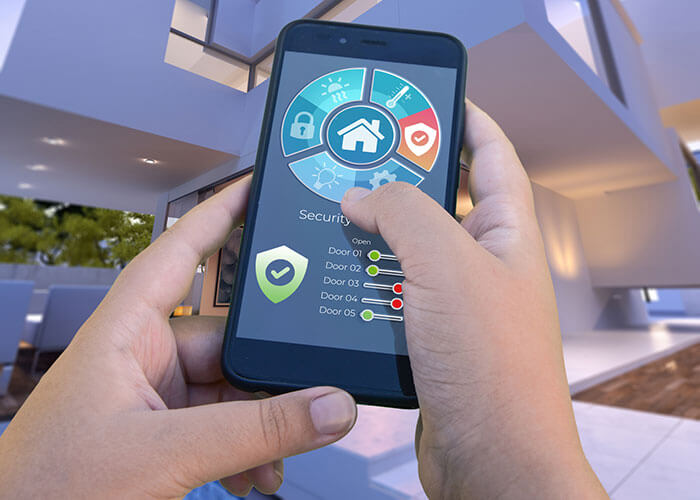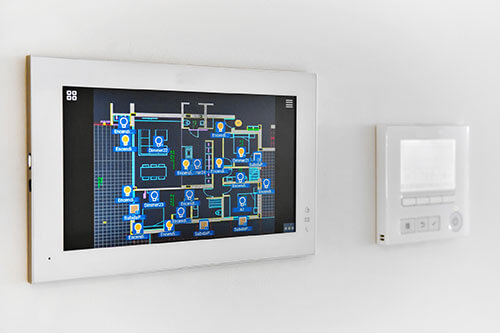Unlocking valuable insights into how smart buildings use energy, CSIRO's Data Clearing House helps buildings conserve power and plays a key role in the smart distributed energy grid.
Improving building energy management is crucial to meeting net zero targets. Commercial buildings currently account for 39% of global energy-related carbon emissions, two-thirds of which are operational emissions such as heating, cooling and power, according to the International Energy Agency.
Smart buildings combine a range of technologies to be more automated, economical and energy efficient. Part of the challenge when tackling carbon emissions is a lack of standardisation between smart building technologies. This makes it difficult for building managers to see the big picture when attempting to gather and interpret the vast amounts of energy-related data which smart buildings generate every day.
Rather than operating in isolation, smart buildings also require tight integration with the energy market to better manage demand and even supply, as they potentially feed energy back into the grid.
Unlocking potential
CSIRO's Data Clearing House is a cloud-based platform which helps smart buildings centralise, standardise and manage their energy data, rather than leave it locked away in isolated silos. The project has received $3.75 million from the NSW Government's Office of Energy and Climate Change to help smart buildings unlock their full energy potential.
The Data Clearing House is designed to complement rather than replace existing building management platforms. By offering a more holistic view of the building, the platform allows building managers to better optimise power usage during the day to curb energy bills, shrink their carbon footprint in line with environmental targets and profit from shifting their load or generation to the grid.
The Data Clearing House also allows smart buildings to participate in on demand networks to help balance energy supply and demand by synchronising electricity consumption with variable renewable energy in the grid, says CSIRO's energy efficiency research leader Dr Stephen White.
Connecting energy assets
Today, the flexibility for power generators to dispatch energy to the grid on demand is limited to large generators, such as gigawatt-scale coal-fired power stations. It relies on connectivity with the Australian Energy Market Operator (AEMO). By 2050, AEMO expects three quarters of all dispatchability in the electricity market is going to come from distributed energy sources. This includes electric vehicles, batteries, thermal storage (hot/chilled water), air conditioning, photovoltaic curtailment, and standby generators coming from sources such as smart buildings.
What's lacking is a way to intelligently coordinate supply and demand between all those distributed energy sources, White says. Within smart buildings, this can include a wide range of flexible energy assets such as batteries, standby generators, heating and cooling, hot water systems, and even electric vehicles.
"At the moment, there isn't the digital connectivity down to these smaller devices that sit within buildings and are largely invisible to the grid," he says.
"The Data Clearing House is making these devices visible to the grid, and we're providing the digital connectivity that would enable them to be dispatchable to keep the lights on and balance supply and demand."
Sharing data to drive innovation
To help drive innovation, the Data Clearing House is also a platform on which smart buildings can share data. Along with connecting research to industry, it also facilitates connecting smart buildings to service providers.
Developers can create innovative applications which run on the platform, available via an app marketplace, which help smart building managers get more value from their data and better manage flexible energy assets.
Breaking down barriers and data discoverability are key aspects as the Data Clearing House creates an ecosystem in which people can then start to innovate, White says.
"It has really shrunk the distance from 'I've got a good algorithm' to 'I've got a commercial product', and that's going to make a big difference when it comes to meeting the challenges around our future energy needs."
“NSW Government funding is enabling us to pilot the Data Clearing House digital infrastructure with a first tranche of over 200 buildings and five pioneering NSW businesses. Energy data from the buildings and the Data Clearing House platform tools will be made available to NSW researchers and innovators to compete in two software development challenge competitions.”
If you enjoyed this story, read our story about the University of Wollongong’s Clean Energy Living Laboratory – set to be Australia's first mixed-use, precinct-based microgrid. You can also sign up for our newsletter to receive updates including our round 2 grants.

